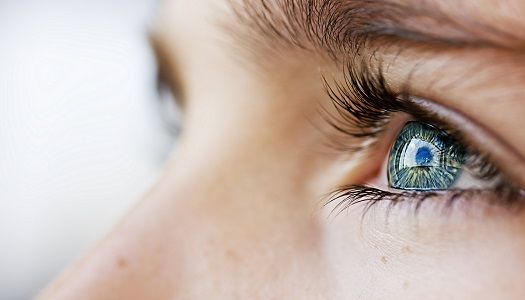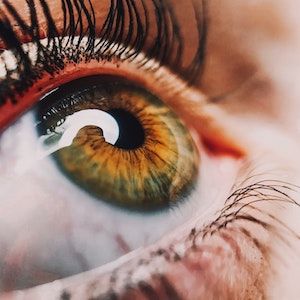Article
Children with Autism Inherit Their Unique Visual Attention Tendencies
Author(s):
Autistic children inherit behaviors that make them less likely to look at eye and mouth regions of the face.

Inherited genetic factors influence the way children with autism pay visual attention to the world around them, according to a new study from the National Institutes of Health.
Autism has been associated with reduced visual attention to other people’s eyes and faces for some time — in fact, visual tests are often used to help diagnose the disorder. However, until recently, it was unknown whether genetics influenced this behavior.
NIH-funded researchers from Washington University in St Louis, Missouri, and Emory University in Atlanta, Georgia, explored the potential genetic foundation of this behavior, which can appear by the first 6 months of age and persist as children grow.
“Research shows that autism likely has a genetic basis. Siblings of children diagnosed with autism and people with certain genetic mutations have a higher risk of developing the disorder compared to the general population,” said Diana Bianchi, MD, director of the Eunice Kennedy Shriver National Institute of Mental Health (NIMH). “Understanding how genes influence social behaviors will help researchers identify new or better ways to treat autism.”
Vision-tracking experiments were conducted in a group of 250 typically developing toddlers aged 18 to 24 months, including 82 identical twins (41 pairs), 84 non-identical twins (42 pairs), and 84 non-sibling children (42 randomized pairs). They also tested 88 non-twin children diagnosed with autism.
Each child watched videos that showed either an actress speaking directly to the viewer, or scenes of children interacting in a daycare setting. In all video frames, children could look at the onscreen characters’ eyes, mouth, body or surrounding objects. Special software captured how often the children looked at each different on-screen region, as well as the timing and direction of eye movements.
The team found that identical twins had synchronized visual patterns, compared to non-identical twins and non-sibling pairs. Identical twins tended to shift their eyes at the same times and in the same direction. They also were more likely to look at the subject’s eyes or mouth at the same time.
Using a statistical measurement called the intraclass correlation coefficient (ICC), which measures how well individuals within a group resemble each other (with a value of 12 marking perfect agreement), researchers found that identical twins had an ICC of 0.91 for eye-looking and 0.86 for mouth-looking. On the other hand, non-identical twins had scores of 0.35 and 0.44 respectively, while non-sibling pairs ranked even lower, with scores of 0.16 and 0.13.
“By comparing identical twins who share the same genes to non-identical twins and randomly paired children who do not share the same genes, the study is one of the first to show that social visual behaviors are under genetic control,” said Lisa Gilotty, Ph.D, chief of NIMH’s Research Program on Autism Spectrum Disorders.
To explore this concept further, researchers evaluated children with autism and discovered that they looked at eye and mouth regions — the most heritable visual traits – much less often compared to other groups of children.
With these findings, the NIH reports that its researchers can explore which genes are involved in social visual engagement, how these genes interact with a child’s environment to shape his/her social engagement, and how these genetic pathways are disrupted in neurodevelopmental disorders like autism.





